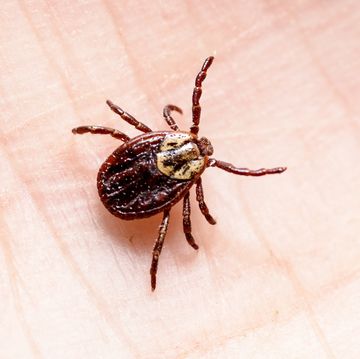Temporomandibular disorders, a group of diseases commonly known as TMD, are without a doubt among the most complex and controversial of all modern ailments. While TMD is usually linked to problems with the muscles or joints (or a combination of the two), it sometimes involves related tissues, such as the ligaments or bone cartilage. Many experts believe that most cases have multiple causes. Trauma, stress, misaligned teeth, orthodontic treatment, and arthritis are just some of the factors associated with TMD. And still, other factors are yet to be discovered.
What is clearly known is that women appear to have TMD symptoms at about twice the rate of men. “Research suggests women’s hormonal fluctuations during pregnancy and menopause may account for their higher incidence,” says John C. Moon, DDS. Fortunately in the majority of cases, TMD pain is temporary and can be relieved with simple measures.
21 Ways To Relieve The Pain From Temporomandibular Disorders
Here are a few pain-fighting moves for TMD that our experts recommend.
Assume The Position
Your tongue’s resting position should be on the top of your palate during the day, says Moon. This relieves tension in the jaw. If you can also maintain this position while you sleep, it might help curb teeth grinding.
Chill Out
Increase bloodflow to the area with an ice pack or bag of frozen peas wrapped in a towel. Cold packs are effective for relieving acute pain and reducing strain and swelling that go along with it, says Jerry F. Taintor, DDS. Apply to the affected area for 5 to 10 minutes or until it feels a little numb. Do not exceed 20 minutes. Repeat every 2 hours for up to 2 days or until the pain is relieved. Apply heat therapy, using a warm compress, for the same length of time.
Cuddle Up With Heat
Heat can soothe muscles for recurrent or prolonged TMD. Apply a heating pad or pack several times a day, especially in the evening when symptoms often seem to worsen, says Taintor. Basically, you want to use hot compresses for muscle aches around the jaw and temples, and use cold compresses for pain at the temporomandibular joint itself, says Andrew S. Kaplan, DMD.
Massage The Jaw
You can also try gently stretching and massaging the jaw as long as the muscles don’t cramp up. If you get the blood flowing in the area, you are likely to alleviate some of your symptoms, says Kaplan. This will help gradually increase your range of motion and strengthen the joint.
MORE: 7 Possible Reasons Your Teeth Hurt (That Aren't A Cavity)
Take An Anti-Inflammatory
Taintor suggests taking two ibuprofen tablets every 4 to 6 hours.
Check Your Body Position
If you work at a desk, check your body position throughout the day. Make sure that you, and especially your chin, are not leaning over the desk. Your back should be supported. As a general guideline for sitting or standing, your cheekbones should be over your clavicles, and your ears should not be too far in front of your shoulders, he says. If you have neck pain and headaches, attach an adjustable document holder to your computer monitor to minimize neck strain as you work. If you’re on the phone all day, avoid tilting your head on your shoulder. Consider getting a headset, says Moon.
Sleep On A Wedge-Shaped Pillow
A wedge pillow helps keep your neck and jaw in proper alignment because it positions you on an incline, says Moon. You can also tuck a pillow under your knees. Sleeping in this position—on your back throughout the entire night with your head, neck, shoulders, and upper back in alignment and less pressure on your lower back—can be very relaxing to your jaw joints and critical to overcoming TMD. But what if you generally sleep on your side? Try placing a beanbag on each side of your head to stop you from rolling into that position.
Limit Your Jaw Movement
If you feel a yawn coming, try to restrict it by holding a fist under your chin, says Kaplan. Yawning can actually stress the jaw.
Don't Chew Gum
Repetitive chewing can stress the jaw and increase TMD symptoms, says Moon. Control other similar habits, such as biting your lips or fingernails, and use your pencil for writing, not chewing.
MORE: 6 Gross Side Effects Of Chewing Gum
Stop Grinding Your Teeth
Gnashing teeth, referred to by doctors as bruxism, is often associated with TMD and may be a factor that exacerbates existing symptoms, says Kaplan.
Create A Relaxing Bedtime Routine
Going to sleep after a stressful day can lead to teeth grinding like nothing else. Don’t go to sleep stressed. Wind down with quiet music, a gentle massage, or a few simple yoga stretches before you climb into bed, says Moon.
Use A Mouth Guard
Ask your dentist to fit you professionally with a mouth guard. These are far better than those sold in sporting goods stores and drugstores. A well-fitted mouth guard can help reduce nighttime grinding and clenching, says Moon. If your symptoms seem worse in the morning, wear a mouth guard during the night. You may be grinding your teeth while you sleep. In some cases, bruxism can lead to poor sleep habits and aggravate symptoms.
Avoid Hard, Crunchy Food
Limit yourself to a soft diet to keep stress off the muscles and joints. Eat soft foods like pasta, fish, mashed potatoes, boiled chicken, and well-cooked vegetables. “Avoid hard-to-chew foods like steak, broiled chicken, salads (which require lots of lateral movement to chew), raw carrots, and celery,” says Kaplan.
Consider Acupressure
To find the point that will ease TMD cheek pain on the left side of your face, Albert Forgione, PhD, recommends the following: Place your left forearm on a table with your palm flat. Put the fingers of your right hand on your left forearm so your index finger is in the fold of your elbow and the rest of your fingers lay next to each other. Wiggle your left middle finger and feel the corresponding ligament move at the edge of your right index fingertip. Press moderately hard on this point for 15 seconds (the point will feel quite sensitive and will hurt if you have found the right spot). You may have to do this 3 times in a row, pausing briefly in between. Switch sides to relieve pain on the right side of your face.
MORE: 6 Pain-Fighting Moves Physical Therapists Swear By
Here’s another one to try: Hegu is a point on the hand also known as large intestine 4. This point is considered to be the most powerful acupressure point in the body for head and face pain. Locate this point by placing the thumb of the opposite hand halfway between the index finger and the thumb on the hand that’s on the same side as your face pain, then extend to the line of the first knuckle and push down. You can also apply ice wrapped in a small towel to easily stimulate the point with both cold and pressure. Hold the ice in place for 20 minutes to provide several hours of relief from face pain or headache, says George E. Maloney, DMD, MAc.
7 Habits To Break
Overcoming temporomandibular disorders is very much a matter of what you don’t do, advises Kaplan. If any of these habits are yours—pay attention! These tips may be of help to you.
- Don’t sleep on your stomach with your head twisted to one side.
- Don’t lie on your back with your head propped up at a sharp angle for reading or watching television.
- Don’t cradle the telephone between your shoulder and chin.
- Don’t prop your chin on one or both of your hands for too long.
- Don’t carry a heavy shoulder bag with the strap on the same shoulder for an extended period.
- Don’t participate in situations, such as painting a ceiling or sitting in the front row during movies, that require looking up for long periods of time.
- Don’t grind or clench your teeth.
TMD Symptoms That Merit A Visit To The Doctor
The most common signs of temporomandibular disorders—among them, facial and jaw joint pain or swelling; headaches; toothaches; aching neck, shoulders, or back; and a clicking, grating, or popping noise or pain when opening or closing your jaw—are usually nothing more than minor to moderate annoyances that will go away when the condition is treated. Few people develop significant long-term effects. Some symptoms, however, are considered more serious and should be investigated by your doctor. Signs that your TMD is getting worse: You can’t open your mouth or brush your teeth, or you are having sharp headaches.
Panel Of Advisors
Albert Forgione, PhD, is a pain specialist and director of research at the Craniofacial Pain Center at Tufts University School of Dental Medicine in Boston.
Andrew S. Kaplan, DMD, is a clinical associate professor of dentistry at Mount Sinai School of Medicine of New York University and a former director of the TMJ and Facial Pain Clinic and associate attending dentist at Mount Sinai Hospital in New York City.
George E. Maloney, DMD, MAc, is an associate professor at the Craniofacial Pain Center at Tufts University School of Dental Medicine in Boston.
John C. Moon, DDS, is a cosmetic and general dentist in Half Moon Bay, California.
Jerry F. Taintor, DDS, is a dentist in private practice in Memphis, Tennessee, the former chair of endodontics at the University of Tennessee College of Dentistry in Memphis, and the former chair of endodontics at the UCLA School of Dentistry. He is author of The Complete Guide to Better Dental Care.












